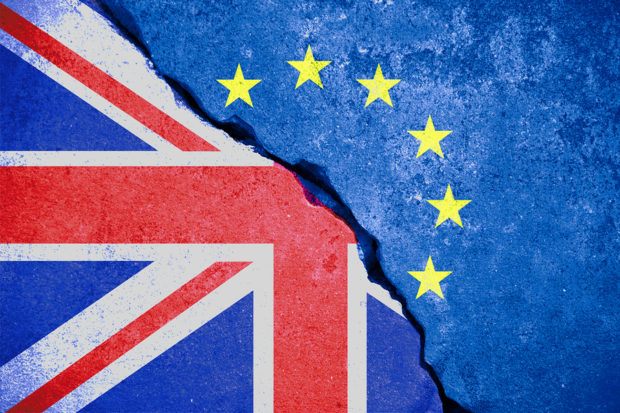British Prime Minister Theresa May’s speech on Friday about Brexit had two audiences who weren’t in the room: the European Union, whom she urged to engage with her proposals, and her own party.
“Our job is not to deal with Brexit in theory, but to make a success of it in practice for all our people,” she said in Belfast, before going on to explain why the favored proposals of anti-EU lawmakers in her own party would not work.
Former Foreign Secretary Boris Johnson this week used his resignation speech to urge May to go back to the strategy she set out at the start of 2017. But that would mean ignoring that May subsequently lost her parliamentary majority and that the plan had no solution to the problem of the Irish border.
In the Northern Irish capital, the prime minister said that the Irish border proposal favored by some Brexit supporters — to simply ignore the problem — would be “to resume our career as an independent sovereign trading nation by betraying commitments to part of our nation and to our nearest neighbor.”
And she explained that other theoretical ideas favored in her party were likewise unrealistic. “Our previous proposal that we could achieve frictionless trade by maintaining ‘substantially similar’ regulatory standards did not prove to be a negotiable position,” she said. “So we needed to make a stronger commitment.”
If May succeeds in pushing her plan through, it will be because she persuades her party that her Brexit is, if not the Brexit they wanted, at least a Brexit that can exist in the real world.





















 Five AI Trends Reshaping Insurance in 2026
Five AI Trends Reshaping Insurance in 2026  Breaking: Andersen to Replace Zaffino as CEO of AIG on June 1
Breaking: Andersen to Replace Zaffino as CEO of AIG on June 1  Slideshow: Carrier Management’s 2025 Top Editor’s Picks (Unlocked)
Slideshow: Carrier Management’s 2025 Top Editor’s Picks (Unlocked)  Insurance Costs, Climate Concerns Factor Heavily in U.S. Home Buying Decisions
Insurance Costs, Climate Concerns Factor Heavily in U.S. Home Buying Decisions 






